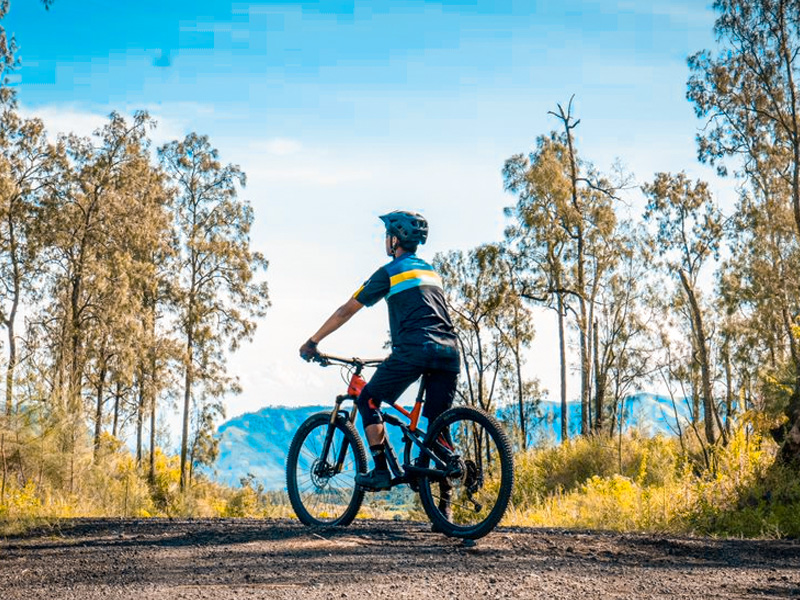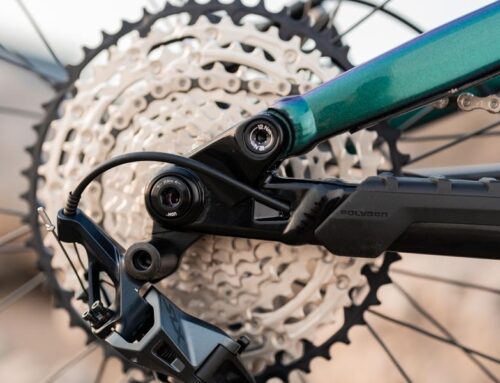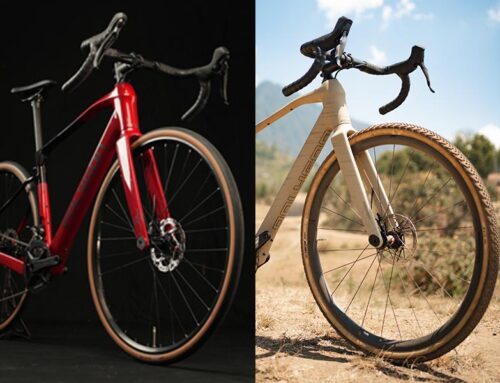Shopping for a new mountain bike? In Singapore, riders aren’t just picking a bike—they’re choosing the right partner for their next adventure. From tackling Bukit Timah’s rocky trails to cruising the Mandai off-road tracks, the right MTB makes all the difference.
Each mountain bike comes with its own terrain focus, frame geometry, and suspension setup, designed to handle specific challenges. Knowing exactly what you need—whether it’s a hardtail for speed, or a full-suspension for comfort—will transform your ride.
In this guide, we’ll break down the different types of mountain bikes so you can find the one that fits your style, your trails, and your weekend goals.
Mountain Bike Types
1. Leisure Mountain Bike
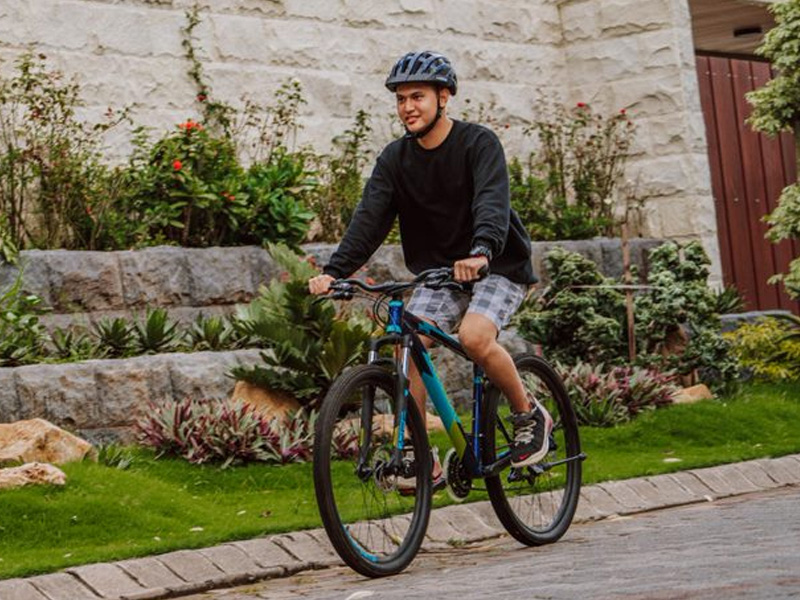
Mountain Bikes (MTBs) Leisure are built for comfort and versatility, featuring a more upright sitting position so you can ride without straining your back.
They perform well both in off-road and urban settings, making them a great all-rounder for riders who want one bike for multiple purposes.
They’re also perfect for light trail riding—think smooth forest paths or gentle park connectors. Popular models like the Polygon Premier 4 or Premier 5 are favourites among casual riders.
Most leisure MTBs come with around 120mm of suspension travel, which is enough to smooth out bumps on the trail without feeling sluggish on the road.
The upright geometry and sturdy frame keep you comfortable even on longer rides, while hydraulic disc brakes give you reliable stopping power in Singapore’s sudden downpours.
Key Features:
- Upright geometry for a relaxed, ergonomic riding posture
- Front suspension (about 120mm travel) to handle mild off-road bumps
- Durable frame that can withstand daily commuting and weekend rides
- Hydraulic disc brakes for strong and consistent braking
- Versatile tyres for both pavement and light trails
Best Use:
- Leisure rides along Park Connector Networks (PCN)
- Occasional off-road adventures like Bukit Timah MTB Trail (easy sections)
- Daily commuting with a touch of weekend trail fun
- Scenic rides at East Coast Park or Coney Island
When to Skip:
- If you plan to ride aggressive downhill or technical MTB trails (you’ll need more travel and specialised geometry)
- If you want a super-light road bike for speed
- If your main goal is high-performance racing—this is more for comfort than competition
2. XC (Cross Country) Mountain Bike
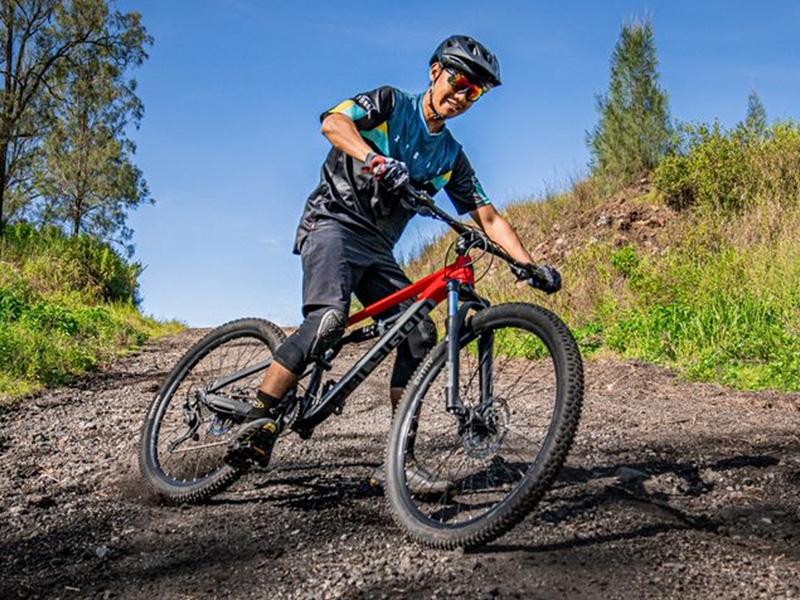
MTB XC (Cross Country) bikes are built for speed, efficiency, and control—perfect for riders who love covering long distances on a mix of terrains.
While some XC bikes are full-suspension, others are hardtails (front suspension only), but all share the same goal: making off-road rides faster and more efficient. They excel on dirt, grass, small rocks, forest trails, and rocky paths—whether it’s the Green Corridor or the smoother sections of Bukit Timah MTB Trail.
With lightweight frames and geometry optimised for pedaling, XC bikes let you maintain higher speeds over relatively flat or rolling terrain. The shorter wheelbase and steeper head-tube angle (70–75°) give precise steering control and agility, perfect for weaving through narrow trails.
Short handlebars enhance responsiveness, while 90–100mm suspension travel (and up to 120mm for modern XC designs) offers just enough cushioning without slowing you down.
Popular choices like the Polygon Xtrada series or Siskiu D Series like D5, D6, & D7 bring a balance of speed, control, and comfort—ideal for competitive riders and weekend warriors alike.
Key Features:
- Lightweight frame for efficient climbing and acceleration
- Shorter wheelbase & chainstay for nimble handling
- Steeper head-tube angle (70–75°) for precise steering control
- Optimised geometry for long periods of seated pedaling
- Suspension travel of 90–100mm (up to 120mm for modern XC)
- Agile and responsive, perfect for quick changes in direction
Best Use:
- Cross-country racing or endurance rides
- Long-distance trail rides where speed matters
- Smooth to moderately rough off-road terrains in Singapore & Malaysia
- Riders who want a fast, responsive bike for mixed terrain adventures
When to Skip:
- If you’re into aggressive downhill or enduro riding (XC suspension travel is too short)
- If comfort over rough terrain is your top priority—go for a trail or enduro MTB instead
- If you mostly ride in the city; a hybrid or leisure MTB might be a better fit
3. Trail Mountain Bike
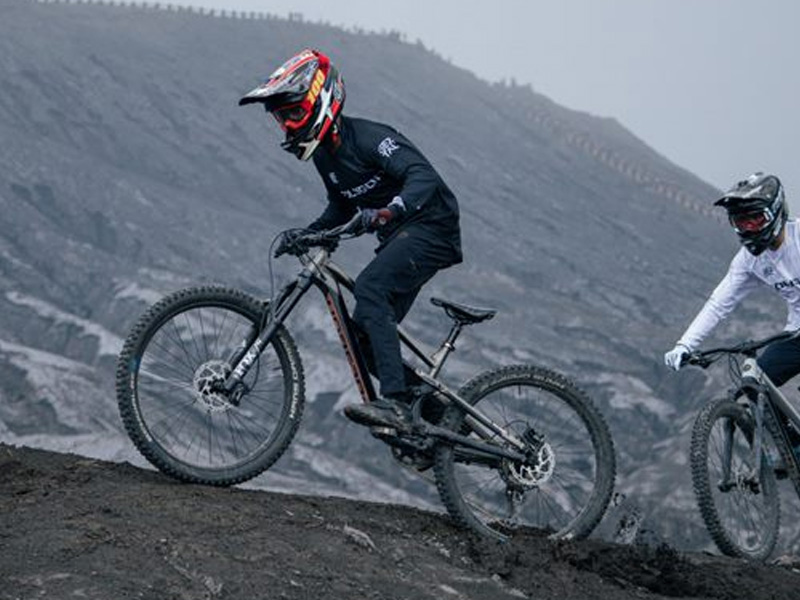
MTB trail bikes share many similarities with cross-country (XC) models, but they’re purpose-built for tackling rougher terrain.
Designed to handle steep inclines, rocky paths, and unpredictable obstacles, they typically feature suspension systems—often full suspension with 120–140mm of travel—integrated into the frame to absorb impacts and keep the ride smooth.
The geometry is tuned for a balance between climbing efficiency and downhill stability: a slightly slacker head tube angle improves control on descents, while a longer wheelbase adds stability at higher speeds. Shorter chainstays make the bike more agile and reduce weight at the rear triangle.
Key Features
- Upright sitting position for enhanced comfort during rides.
- Suitable for both off-road and urban environments.
- Typically equipped with 120mm travel for light trail capability.
- Durable frame designed for stability and longevity.
- Hydraulic disc brakes for reliable stopping power.
- Example models: Polygon Premier 4, Polygon Premier 5.
Best Use
- Leisure riding on mixed terrain.
- Light trail rides with moderate obstacles.
- Urban commuting where occasional off-road detours are expected.
- Riders who prioritise comfort over aggressive trail performance.
When to Skip
- If planning to tackle technical or extreme downhill trails.
- For competitive MTB racing where higher suspension travel is preferred.
- If weight and speed are top priorities over comfort.
A solid example of this category is the Polygon Siskiu T7 or Siskiu T8—both offering excellent value with balanced geometry, capable components, and reliable performance for riders who want to explore a wide range of trails without compromising too much on either climbing or descending.
4. Enduro Mountain Bike
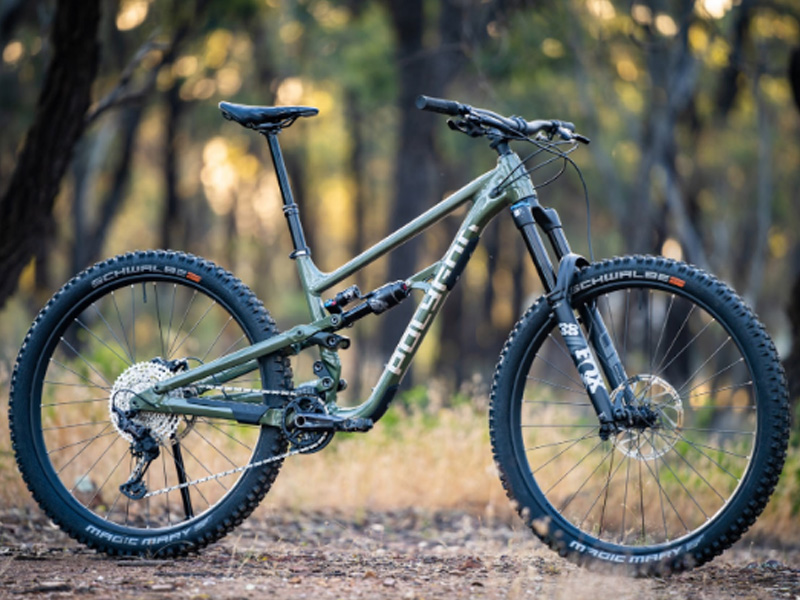
The Enduro is an off-road mountain bike that blends durability, speed, and agility in one rugged package.
Equipped with a drivetrain and gearing that function similarly to a road bike, it’s capable of tackling a wide range of terrain — from steep climbs to fast descents, and even sandpits or muddy tracks, much like an All-Mountain (AM) bike. Enduro mountain bikes are lighter than downhill bikes, yet still robust enough for aggressive riding.
Most Enduro MTB bikes feature dual or full-suspension frames with 150–180mm of suspension travel, giving you enough cushion for big drops, rock gardens, and root-laden trails. Their geometry is designed for stability at high speed while still allowing quick handling through technical sections.
Key Features
- 150–180mm of suspension travel for absorbing big impacts
- Dual or full-suspension frame for comfort and control
- Wide handlebars for stable handling on technical terrain
- Dropper seat post for quick seat height adjustment
- Hydraulic disc brakes for powerful, all-weather stopping
- Aggressive geometry for downhill stability and climbing efficiency
Best Use
- Enduro racing and long-trail adventures with mixed climbs and descents
- Bike park sessions with jumps, berms, and technical features
- Backcountry trails with unpredictable terrain and obstacles
When to Skip
- If you ride mostly smooth cross-country (XC) or paved paths
- If you prefer lightweight bikes for speed on mellow terrain
- If your main focus is pure downhill racing — a DH bike may suit better
If you’re looking for a capable machine that can push limits while keeping you in control, the Polygon Collosus N9 is an excellent choice. With its race-ready suspension, lightweight yet strong frame, and aggressive geometry, it’s built to thrive in the most demanding enduro stages.
5. Downhill Mountain Bike
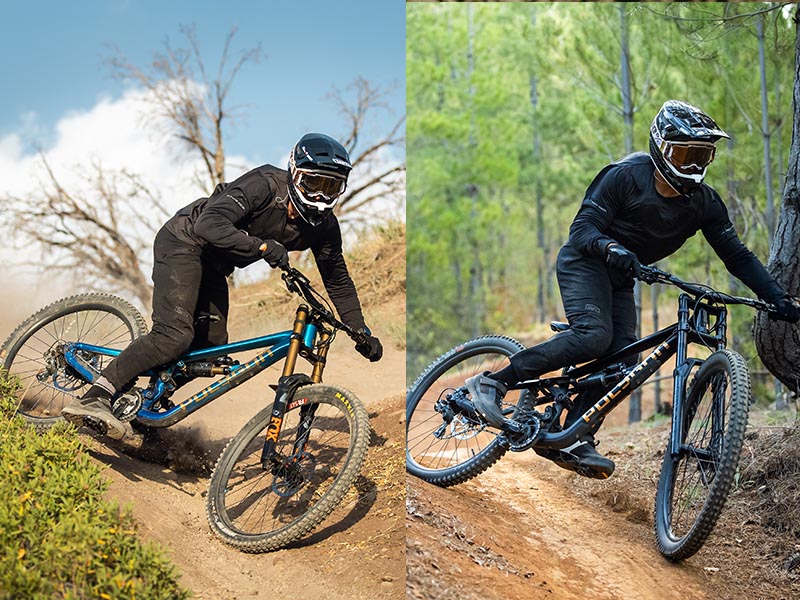
Downhill bikes are engineered to handle steep, rugged descents at high speed with absolute stability and control.
They feature large, heavy-duty frames that keep the rider balanced even when flying down mountain slopes or racing on extreme downhill terrain. With suspension travel of up to 200mm, these bikes soak up massive impacts, allowing riders to land jumps over 2 meters high smoothly and safely.
Key Features
- Heavy-duty frame for maximum stability at high speed
- Up to 200mm of suspension travel for big drops and rough terrain
- Aggressive geometry for confident handling on steep slopes
- Wide handlebars for enhanced control
- Hydraulic disc brakes for powerful and consistent stopping power
- 1x drivetrain for simple, efficient, and precise gear shifting
- Strong wheels and high-volume tires for impact absorption and traction
Best Use
- Extreme downhill racing and bike park riding
- Technical descents with large drops, rock gardens, and jumps
- Gravity-focused trails where climbing is minimal but descents are intense
When to Skip
- If most of your riding involves flat, smooth, or rolling terrain
- If you need a bike for long climbs or cross-country endurance — the weight and geometry can slow you down uphill
- If you prefer a more versatile MTB for mixed-terrain rides — an enduro or all-mountain bike may suit better
The Polygon Collosus DH7 & DH9 perfectly embody what a modern downhill bike should be — precision-built components, advanced Independent Floating Suspension (IFS), and the relentless drive to conquer the toughest mountain trails.
With aggressive geometry, they’re made to charge through rocks, mud, roots, and everything in between.
6. Electric Mountain Bike (E-MTB)
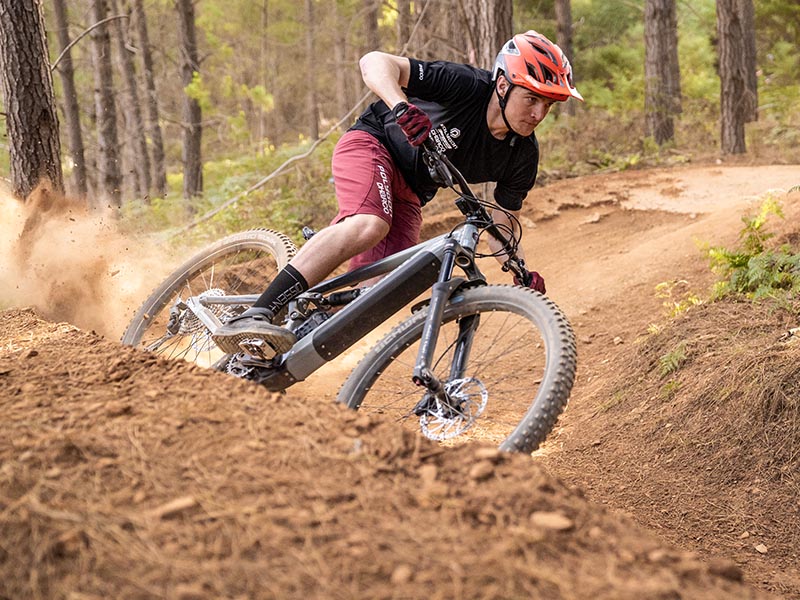
An electric mountain bike (e-MTB) is a mountain bike equipped with an integrated electric motor and rechargeable battery to assist the rider’s pedaling.
Unlike a fully motorized vehicle, the motor only activates when you pedal, making it a pedal-assist system rather than a throttle-only ride. This technology allows riders to tackle steep climbs, long distances, and challenging terrain with less fatigue while still getting the experience of mountain biking.
Key Features
- Pedal-assist electric motor (usually mid-drive for better balance)
- Rechargeable lithium-ion battery, often offering 40–100 km range per charge
- Multiple assist modes (eco, trail, boost) to adjust power output
- Robust frame and geometry for stability and control on rough terrain
- Suspension systems (hardtail or full-suspension) for comfort and impact absorption
- Hydraulic disc brakes for strong, reliable stopping power
- Wider tires with aggressive tread for better grip on dirt, rocks, and roots
Best Use
- Riders who want to tackle steep climbs with less physical strain
- Long-distance trail exploration without worrying about running out of energy
- Group rides where varying fitness levels need to keep pace
- Technical trails where a boost can help maintain momentum over obstacles
- Commuting combined with off-road adventure for a versatile riding experience
When to Skip
- If you ride mostly flat, smooth paths where motor assistance isn’t needed
- If you prefer the lightweight feel of a traditional MTB — e-MTBs are heavier due to the motor and battery
- If your local trails prohibit e-bikes (some areas restrict their use)
- If you enjoy mountain biking primarily for the full physical workout without assistance
Read also
Ready to Choose Your Mountain Bike?
Now that you’ve read this guide, picking the right mountain bike should be a no-brainer. Decide on your suspension: do you want full suspension for maximum comfort, or is a rigid or hardtail bike enough?
Beginners can start with a single-suspension model, but if you plan to ride off-road often or tackle rough trails, go for a dual-suspension bike for better control and stability.
If you’re in Singapore and searching for a “bike shop near me” or the best place to buy a mountain bike, Rodalink has you covered with quality bikes from trusted brands like Polygon & Marin. Enjoy perks like Atome Paylater, free shipping, and OCBC 0% Installment. Visit our website to see the latest promos. Plus, become a Rodalink Singapore member for even more exclusive benefits. Let’s get you started on your next epic cycling adventure!
